Homemade Partridgeberry Wine (AKA: Lingonberry Wine) is fantastic, and worth the effort to make it. Here's my partridgeberry wine recipe!

A month ago, I joined the Canadian Food Experience Project, writing about my memories of a uniquely Canadian food experience.
The Canadian Food Experience Project began on June 7 2013. Per the project:
“As we share our collective stories across the vastness of our Canadian landscape through our regional food experiences, we hope to bring global clarity to our Canadian culinary identity through the cadence of our concerted Canadian voice. Please join us.”
This month’s topic is “A Regional Canadian Food”.
My mind immediately went to the years I spent living in Newfoundland. Newfoundland has a unique culture - even within the Atlantic Canadian provinces alone! - and that really comes through in their food.
I was spoiled on some of the best seafood ANYWHERE, and was always trying new things.. rabbit stew. Flipper pie. Every manner of deep fried seafood imaginable. Unique preparations of fish and shellfish, and the most wonderful game meats.
I love moose stew, and I'm proud to say that I make the most wildly amazing moose stew ever.
Unfortunately, I haven't been able to get my hands on any moose in the past 7 years... and I'd be afraid to admit to just what depravity I'd agree to, just to get some at this point!
Part of what makes my moose stew ridiculously good is the inclusion of partridgeberry wine - a unique wine that is locally produced and readily available in Newfoundland.
The tart, bright flavours of the wine work so beautifully with the gamey flavor of the meat... oh, it's a work of art. I really, really need to get some moose meat soon. (Sorry, I mean.. "Gotta get me moose, b'y!").
ANYWAY.

What Are Partridgeberries?
Partridgeberries are indigenous to Newfoundland, as well as Scandinavia. They're tart little red berries that taste like a cross between a cranberry and a blueberry... you may know them as "lingonberries", if you're a fan of IKEA!
They are one of a few amazing berries that grow wild in Newfoundland, and they're very popular in Newfoundland cuisine, appearing in jams, sauces, in candies, on cheesecake... and in wine.
You can buy partridgeberry wine in local wine stores back home, as there are several Newfoundland wineries that specialize in it.
Unfortunately, you can't buy it here in Minnesota, anywhere I've seen.
Homesick desperation is one of the mothers of invention in my kitchen, and a few years ago I created a recipe for lingonberry wine. We were able to buy a case of the berries from a local wholesaler.. And here we are!
This makes a very full bodied, gorgeous wine. It's a fairly sweet wine, with a great mouth feel .. very delicious, and very luxurious. Definitely worth the effort of finding a case of partridgeberries!

Partridgeberry Wine Ingredients
Bottled Spring Water
While using tap water can be an option, we opt to use jugs of spring water, for a couple of reasons..
First of all, life in Minneapolis opened our eyes to the fact that tap water doesn’t always taste good (or even potable, to be honest!).
While I’ve lived in areas where the tap water tastes fresh and clean (without a filter even!), we know that’s not the case for everyone. Bottled spring water won’t introduce any weird, undesirable flavours to your wine.
Additionally, there’s the convenience factor. Not only is it clean tasting, it’s pre-measured, sterile, and handy.
However, if your tap water is consistently tasty and safe, feel free to use that instead of bottled.
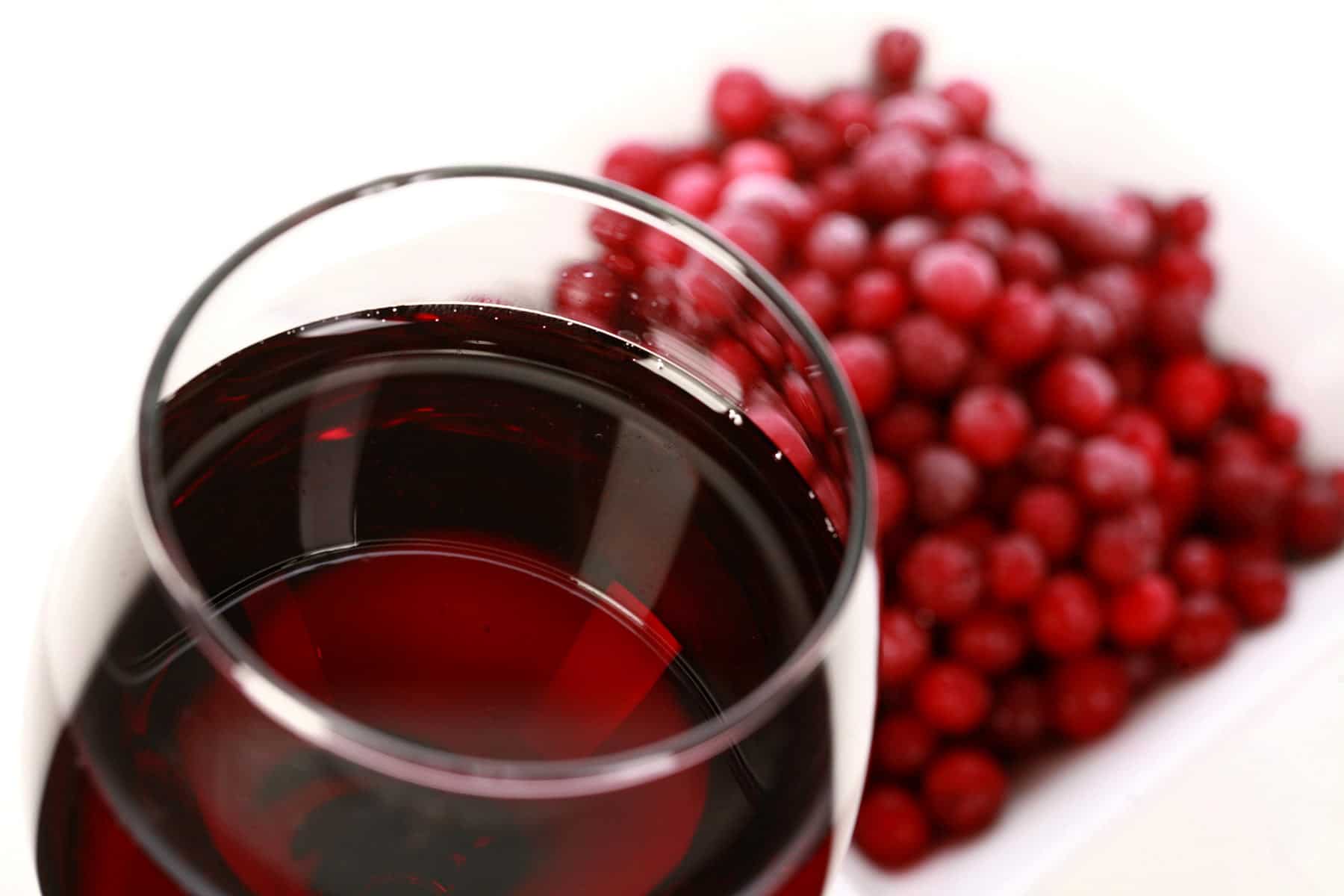
Fresh or Frozen Partridgeberries
This can be a tricky ingredient to find, but hey... there’s fun to be had in the hunt, right?
You can usually find the berries at Newfoundland stores. Depending on where you live, you may be lucky to have one in your area. I know there was one in Winnipeg, a few in Southern Ontario, etc.
Barring that, you can sometimes find them - usually under the “lingonberries” moniker - at Scandinavian grocers and specialty food stores, butchers, etc.
In Minneapolis, we buy them frozen - in smaller amounts - at Ingebretsen’s and at Hackenmueller’s Meats.
However, the REAL goldmine I found was a local fish wholesaler - Olsen Fish Company - that would sell IQF Lingonberries by the case! This option was much cheaper than buying the small retail amounts, and allowed us to make a large batch of this wine.
If you can only find lingonberries by the lb - and are having a heart attack at doing the math for this recipe - no worries, the recipe can be divided. More on that in a bit!
Can’t Find Partridgeberries?
Unable to get your hands on partridgeberries? I actually designed a "faux partridgeberry" wine recipe a while back.
It was pretty genius, if I do say so myself - balancing cranberries and blueberries to come up with a wine that tastes *exactly* like it was made from actual partridgeberries!
click here to go to the recipe for it!

Sugar
We prefer to use plain white granulated sugar for this lingonberry wine.
It’s a good neutral flavour, and I really think that brown sugar or maple syrup would overwhelm the lingonberry flavour.
Alcohol Content
Aside from sugar's flavour, there’s the matter of alcohol content.
Your wine’s final ABV will vary wildly dependent on a couple things: how much sugar you add, and what kind of yeast you use (more on that in a bit)
Any amount of sugar will result in a higher alcohol content than making the same wine without sugar added. Sugar - both in the base wine itself, and from the added sugars - is what feeds the yeast, the yeast eats up the sugars and gives off alcohol as the byproduct of that process.
More sugar = more food = more alcohol... to a point, anyway. About that...

Yeast
The type of yeast you use will impact the alcohol content of the final product.
Yeast organisms don’t have an *unlimited* capacity to process sugar into alcohol. At some point, the environment they’re living in - the brewing wine - becomes too high in alcohol for the yeast to survive. They die off, the fermentation stops.
Different types of yeast have different tolerances for alcohol in the environment. That is, some yeast will be able to survive higher amounts of alcohol in the wine, so they’ll continue producing it longer than some other types.
Some types of yeast will bring you to something like an 8% ABV, while others will let things run wild until close to 20% ABV.
It’s good to know what you have in mind, when you choose your yeast. For this wine, we’ll usually use Red Star’s “Montrachet” yeast.
Everything Else
Everything else in this recipe is technically optional, but contributes to it finishing as a well balanced wine. These ingredients include:
Acid Blend, Tannin - Balances and rounds out the flavours.
Pectic Enzyme - Breaks down fruit, especially as it relates to preventing “haze” from the pectins.
Yeast Nutrient - Gives a boost to the yeast.
Golden Raisins - Enhances the body and mouth feel of the wine.
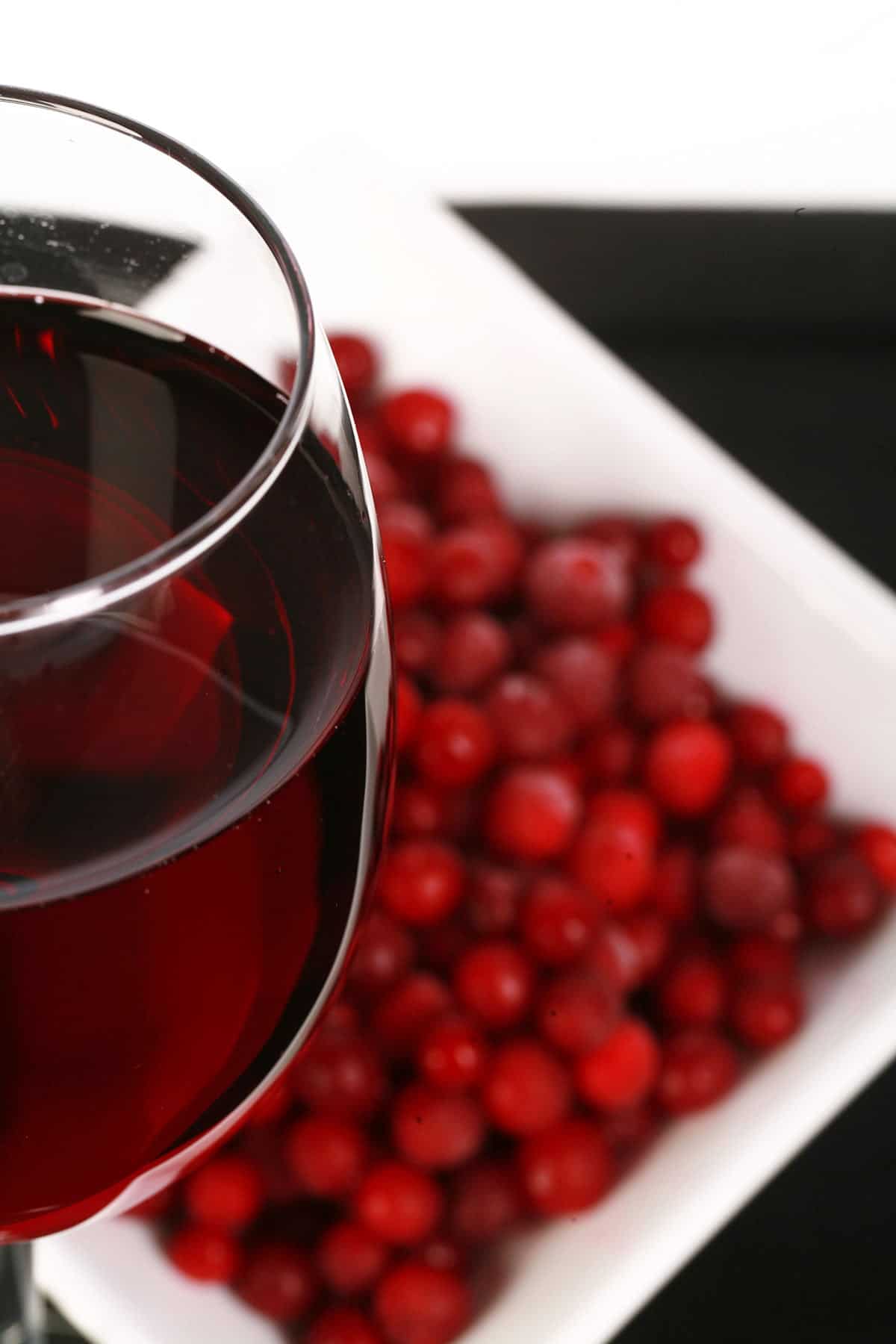
Back Sweetening Your Homemade Partridgeberry Wine
Sometimes - usually, even - you’ll find that the yeast went a bit too far with their smorgasbord, and you end up with a peach wine that’s not as sweet as you’d like it.
... and that’s when you back sweeten it! You can read my How to Stabilize and Back Sweeten Wine post for information on how to back sweeten it.
How to Make Partridgeberry Wine
If you haven't attempted making wine before, don't be intimidated! Check out our primer to home brewing:
- Wine Making At Home, Part 1: Why?
- Wine Making at Home, Part 2: Equipment to Get Started
- Wine Making at Home, Part 3: The Brewing Process.
- Wine Making at Home, Part 4: How to Stabilize and Back Sweeten Wine
Just a small handful of entries, and you'll be good to go!

Scaling This Wine Recipe
Good news: you can easily scale this wine recipe up or down - in fact, there's a function inside the recipe card itself to do the math for you!
One note, though: You don't need to divide or multiply the yeast, but the software doesn't know that. We will use one pouch of yeast for anything from 1-5x gallons, and then 1 pouch for every 5x batches beyond that.
Also, for anything that scales to awkward measurements, it’s perfectly ok to round up or down to the nearest easy measurement (¼ tsp, etc).
As a related note: The recipe software is definitely geared towards cooking, not wine making. Therefore, you can pretty much ignore all of the info it gives you: The nutritional info is calculated on everything that goes into the wine.
It does not take into account how much sugar will be fermented out, how much volume is lost to racking, the fact that the fruit pulp is removed before the final product, etc.

This recipe is one of many fantastic Canadian recipes in my cookbook, "More Than Poutine: Favourite Foods from my Home and Native Land”. "More than Poutine" is a Canadian cookbook like no other - written by a Canadian living away, it includes both traditional home cooking recipes, as well as accurate homemade versions of many of the snacks, sauces, convenience foods, and other food items that are hard to come by outside of Canada! Order your copy here on this site, through Amazon, or through any major bookseller!

More Home Brewing Recipes!
While you've got your current homebrew fermenting away, why not consider putting a batch of something else on, to occupy your wait time? Here are a few of my other wine, cider, and mead recipes:
Wine Recipes
Banana Wine Recipe
Blackberry Wine Recipe
Blackcurrant Wine Recipe
Blueberry Wine Recipe
Cherry Wine Recipe
Cranberry Clementine Christmas Wine Recipe
Cranberry Wine Recipe
Faux Lingonberry Wine
Lychee Wine Recipe
Mango Strawberry Wine Recipe
Mango Wine Recipe
Mint Wine Recipe
Lychee Wine Recipe
Passionfruit Wine Recipe
Peach Wine Recipe
Stone Fruit Wine Recipe
Strawberry Wine Recipe
Ube Wine Recipe
Watermelon Wine Recipe
Mead Recipes
Black Cherry Mead Recipe
Blueberry-Clementine Mead Recipe
Blueberry Mead Recipe
Clementine Mead Recipe
Pumpkin Mead Recipe
Wildflower Mead Recipe
Cider & Miscellaneous Homebrew Recipes
Hard Apple Cider Recipe
Home Brew Hard Iced Tea Recipe
Maple Hard Apple Cider Recipe
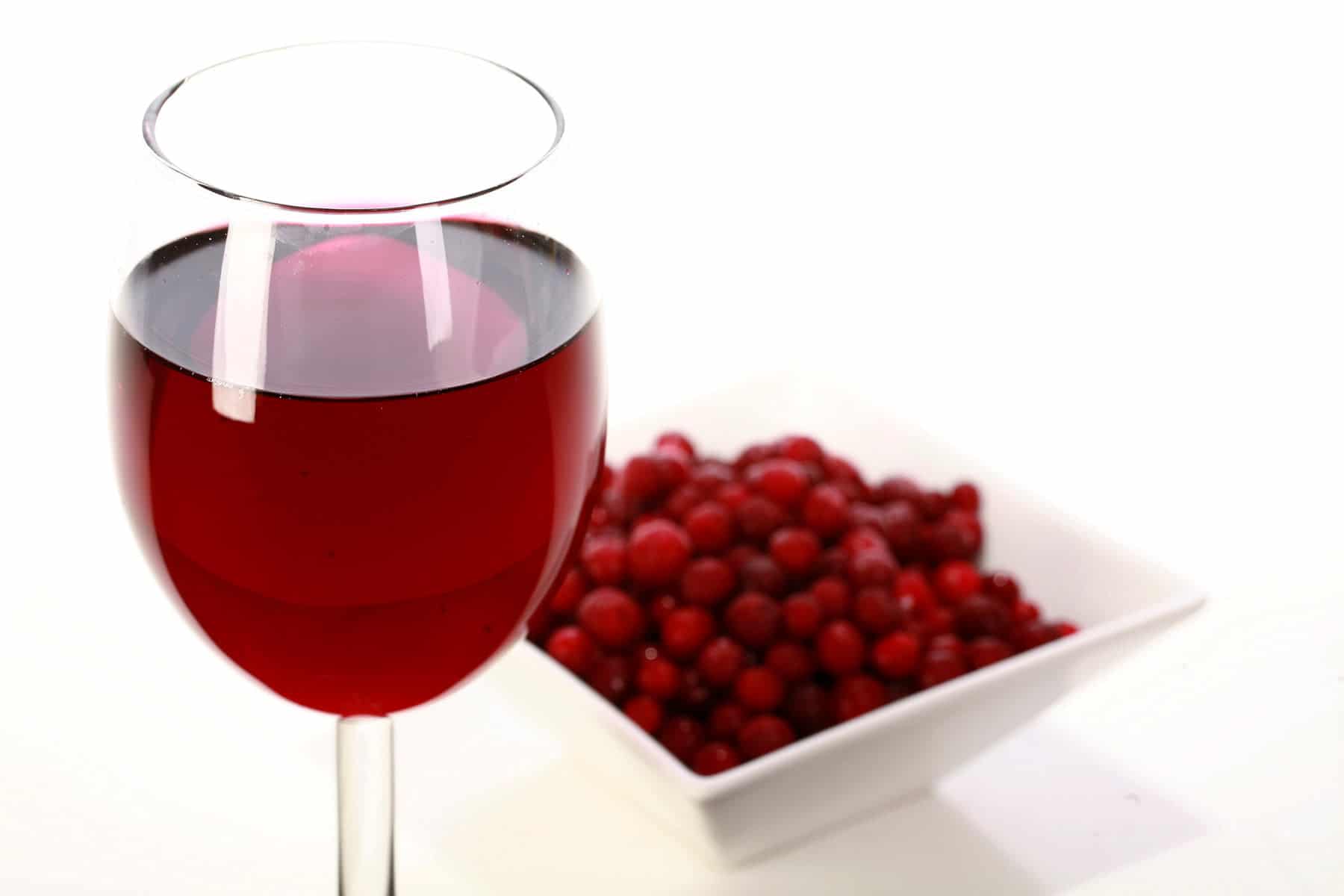
Share the Love!
Before you drink up, be sure to take some pics of your handiwork! If you post it to Bluesky, be sure to tag us - @CelebrationGen. We're also on Pinterest, so you can save all your favourite recipes to a board!
Also, be sure to subscribe to my free monthly email newsletter, so you never miss out on any of my nonsense.
Well, the published nonsense, anyway!
Partridgeberry Wine
Equipment
- 1 6.5 gallon fermenter bucket and lid
- 1 or 2 6.5 gallon glass carboys & stoppers
- 1 air lock and stopper
- Siphon, siphon tubing.
Ingredients
- 15 lbs Frozen Partridgeberries
- 13 lbs Granulated Sugar
- 5 gallons Water
- 2.5 teaspoon Acid Blend
- 2.5 teaspoon Pectic Enzyme
- 1 teaspoon Yeast Nutrient
- 5 lbs Golden Raisins
- 1.25 teaspoon Wine Tannin
- 1 package Red Star Montrechet Wine Yeast
Instructions
- Allow the partridgeberries to partially thaw, then coarsely chop them (A food processor comes in handy!).
- Place berries and sugar into a large (7+ gallon) pot, stir until well combined. Add water, stir well to dissolve sugar. Heat to ALMOST boiling – stirring constantly – then simmer gently for 10 minutes.
- Stir in acid blend, enzyme, nutrient, and raisins.
- Pour mixture into a freshly sanitized 6.5 gallon fermenting bucket. Cover with sanitized lid and air lock, allow to cool to room temperature (overnight).
- The next morning, give the mixture a quick stir with a long, sanitized spoon, and – using sanitized equipment – take a gravity reading. Keep track of the number! (This is an optional step, but will allow you to calculate your final ABV %)
- Sprinkle yeast into fermenter, cover with sanitized cover and air lock. Within 48 hours, you should notice fermentation activity – bubbles in the airlock, carbonation and /or swirling in the wine must. This means you’re good to go!
- After a week or so, use your sanitized siphon setup to rack the must into a freshly sanitized 6- 6.5 gallon carboy. Put the carboy somewhere cool (not cold!), and leave it alone for a month or so.
- Using sanitized equipment, rack the partridgeberry wine off the sediment, into a clean, freshly sanitized 5 or 6 gallon carboy. Cap with sanitized airlock, leave it alone for another 2-3 months.
- Rack one more time, leave it for another 3 months or so.
- When your wine has been racked a few times and shows NO more fermenting activity for a month or so (no bubbles in the airlock, no more sediment being produced, you can move on to bottling.
- Follow the instructions on your selected type of wine stabilizer to stop fermentation. For potassium sorbate, this needs to be done 2-3 days before bottling.
- Using sanitized equipment, take a gravity reading, then rack the wine into clean, sanitized bottles. Cork.
- Store wine in a cool dark place. Wine tastes even better after a year of aging in bottles.
Notes
Nutrition



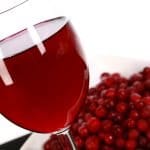

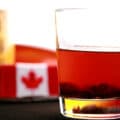
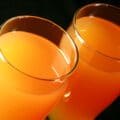

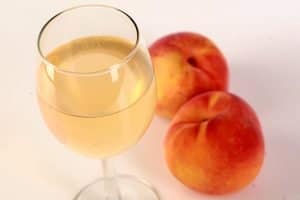

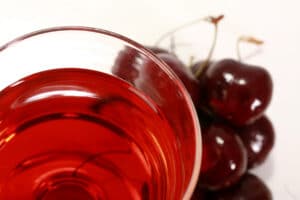
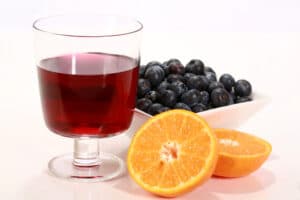
Lyndsay Wells
I really enjoyed this post. The first time I had Moose was on New Year's Eve at a winter camp in Manitoba and I loved it. I can only imagine how incredible your stew must be with that wine.
A Canadian Foodie
You are definitely going to have to get you some moose to make the stew with this wine on one of our posts. I had never heard of this berry and love foraging and learning about Canadian berries, so had a good time reading all about them... really appreciate that you wrote about something so personal, so regional, yet novel to me... which is exactly what regional food is... new to the rest of us, usually. Brilliant, but can't get any partridge berries anywhere around here.
🙂
V